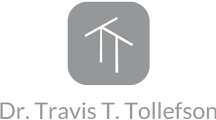Rhinoplasty is one of the most common plastic surgeries, often referred to as “nose job.” It is a surgery that enhances facial harmony by modifying the nose’s shape through corrective procedures applied on skin, bone, or cartilage. This surgery is primarily performed to improve breathing or facial appearance.
One thing to note here is that Rhinoplasty is not for everyone. Before considering Rhinoplasty, the surgeon will consider a wide range of other factors, including your facial features, skin, bone structure, etc.
Once the surgery is finalized, the surgeon will help you understand the intricacies of the Rhinoplasty surgery, associated risks, dos and don’ts, treatment plan, post-procedure care, pre-surgery precautions, and more.
What is Rhinoplasty?
Nose reshaping surgery, nose job, or Rhinoplasty is a commonly performed surgical procedure that enhances facial appearance or improves breathing by changing/rectifying the nose’s shape. The shape of our nose plays a pivotal role in our facial appearance. A deformed or poor nose structure can impact the overall appearance and look, making it one of the most requested and recommended cosmetic procedures to improve the overall appearance.
What are the Goals of Rhinoplasty Procedure?
There are many goals of Rhinoplasty, including the following:
- Improving the shape of the nose
- Preserving and improving breathing
- Enhancing facial appearance
- Creating a natural balance with other facial features
- Increased confidence
Different people have different goals of the Rhinoplasty procedure, but it mainly revolves around the above-mentioned goals.
Factors to Consider Before Rhinoplasty
Many factors need to be considered before going in for the Rhinoplasty procedure. Your surgeon would guide you through the process and evaluate the considerations together to decide if you’re an ideal candidate for Rhinoplasty or not.
The below-mentioned factors impact the outcome of the Rhinoplasty procedure and help personalize the surgical plan. Let’s dive in.
Age
Ideally, the Rhinoplasty procedure is not performed at a very young age. It is recommended to go for Rhinoplasty after the growth is complete, usually 15-16 years for girls and 17-18 years for boys. Going for a Rhinoplasty procedure before complete growth can negatively influence the natural growth of the nose.
Moreover, if the nose job is done before completion of growth, any growth after the Rhinoplasty procedure would change the overall shape of the nose, causing unwanted results.
However, younger patients suffering from severe nasal obstruction and breathing problems may choose a nose job procedure.
Skin Thickness
The primary aim of nose surgery is to rectify or modify the nose’s underlying structure. The thickness of the skin plays a vital role in how the nose looks after nose surgery. For people with very thin skin, the changes made to the nose’s underlying structure are easily visible.
Similarly, changes made to the nose’s bone and cartilage is harder to notice in people with thick nasal skin. The thickness of nasal skin plays a crucial role in helping surgeons decipher Rhinoplasty risks and decide on a treatment plan.
Gender and Ethnicity
It’s a well-known fact that facial structure and nasal shape vary across genders and ethnicities. When it comes to Rhinoplasty procedures, one size fits all approach doesn’t work. After careful examination, the surgeon would define an operational plan that tailors specifically to your gender and ethnicity. Such a tailored approach is essential to get the desired outcome.
Surgical History
If the patient has had a Rhinoplasty procedure or deviated septum surgery done in the past, it can influence how the nose job surgery would be done. If you’ve had a nose job or any other facial procedure done, it is essential to tell your surgeon beforehand to decide the treatment plan.
Facial Harmony
The nose plays a critical role in the overall facial appearance of a person. The changes you desire from a nose job procedure should create facial harmony by improving, preserving, and uplifting the facial appearance.
It is essential to consider other facial features before deciding to go for a nose job. If you have multiple facial features that are off-balance, consider addressing all the facial features together to bring a facial harmony.
If not, the nose job procedure would create a dissonance that would negatively impact the facial appearance. For this reason, the surgeon suggests computer-generated image simulation to demonstrate and visualize how the face will look after the nose surgery.
Medical History
One other factor that is considered before the Rhinoplasty procedure is performed, is comprehensively checking your medical history.
It is vital to inform the surgeon about past surgeries (if any), current medications, and any allergies or medical conditions. It would help decide if Rhinoplasty can be performed while also influencing the recovery process.
Types of Rhinoplasty
The incision type decides the type of Rhinoplasty. There are two types of Rhinoplasty, including:
- Open Rhinoplasty
- Closed Rhinoplasty
Rhinoplasty Procedure
#1 Anesthesia
During the surgical procedure, the patients are administered medications for comfort, including either general anesthesia or intravenous sedation. The surgeon will choose which medication to administer as per your health, the scale of the nose job procedure, complexity, and other factors.
#2 Incision
As mentioned earlier, the Rhinoplasty procedure can be of two types – open or closed. In closed Rhinoplasty, the incisions are done inside the nose.
In open nose surgery, the incisions are done on the tissue known as Columella, which separates the nostrils. The incisions help raise the skin covering cartilages and nasal bones, reshaping and restructuring the nose.
#3 Reshaping the Nose Structure
Reshaping a large nose may include removing cartilage, and at times, cartilage grafts may be added. The cartilage present in the middle portion of the nose called the septum is often used for this purpose. At times, cartilage from the rib cartilage or ear can be used as well.
#4 Correction of Deviated Septum
The deviated septum can be corrected by straightening and reshaping the projections in the nose structure. It helps to improve breathing, and enhances appearance and facial harmony.
#5 Closing the Incision
The incision is closed once the underlying bone and cartilage are restructured and reshaped as desired. The nasal tissue and skin are redraped after the surgery.
#6 Results – Post Surgery Care
For a few days after the surgery, the nose would be supported using gauze and splints to support and accelerate healing. The patient has to follow the post-surgery care instructions given by the surgeon. Some of the standard post-surgery instructions include:
- Not blowing the nose for few weeks post-surgery.
- The head should be elevated for a few days while sleeping post the surgery.
- Avoid sun post-surgery.
- Don’t exert the nose region for any reason and minimize risks causing any injuries.
- Consult with the surgeon immediately in case of any changes in the surgical area or any abnormal pain. These indications include – excessive bleeding, visual impairment, high fever, unbearable pain, skin rash, and other abnormalities.
- Visit the surgeon regularly for routine checkups after the surgery.
Rhinoplasty Recovery Time
Patients are discharged from the hospital after 3-4 days or a week after the surgery. However, the Rhinoplasty recovery time may exceed 4-5 weeks, depending on the scale and complexity of the nose job procedure.
Rhinoplasty Risks
As with any other major surgery, nose surgery comes with a few risks as well. While medical science has advanced and modern procedures carry far fewer risks than earlier, it is always a possibility. Some of the significant Rhinoplasty risks include:
- Infection
- Bleeding
- Adverse reaction to generation anesthesia
- Difficulty in breathing through the nose
- Results not as expected – the final nose shape doesn’t appear as desired.
- Pain, swelling, and discoloration may last for a long time, sometimes even for life.
- Scarring
- Septal perforation
- Additional surgery may be required at times
However, it needs to be noted that risks and complications with Rhinoplasty are far less than most other major surgeries. The risks and complications mentioned above are rare.
Consulting with a surgeon beforehand to tailor a treatment plan and following post-surgery care instructions would help achieve the results you seek with Rhinoplasty. So, if you have a deformed or poorly shaped nose, going for Rhinoplasty is an ideal solution.

